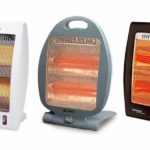On a cold autumn day, when it is still far from turning on the central heating, you want warmth and comfort. One of the most modern heating devices that can save the family budget and create a comfortable indoor environment is a quartz heater for the home. In this article we will tell you what these heating devices are, and also talk about the advantages and disadvantages of such equipment.
Varieties
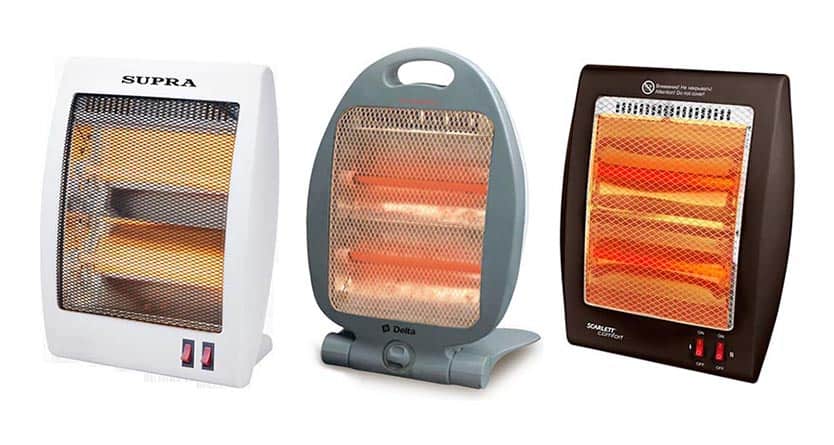
Not so long ago, no one had a clue that there were such methods of heating a room. Today it is one of the most demanded and safe devices for heating an apartment or private house.
First of all, it should be understood that the concept of "quartz heater" is suitable for two types of devices at once. They are so different in appearance and method of heat transfer, the only thing that unites them is quartz or ordinary sand. This element is present in the device of both models.
So, all models of quartz heaters can be divided into 2 large groups:
- Infrared. The main working unit of such devices is a small heating element. It is placed in a special sealed quartz glass tube. All other structural elements are designed to focus and distribute infrared radiation generated by the heater.
- Convection... They represent a monolithic slab of quartz sand, in the body of which a special heating element is placed.
![]() See also - Choosing a good diesel heater for your garage and summer cottage
See also - Choosing a good diesel heater for your garage and summer cottage
Monolithic quartz heaters
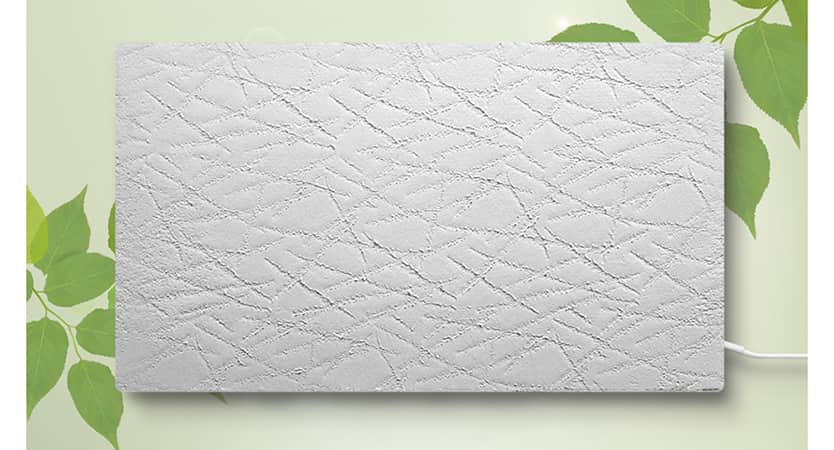
The principle of operation of such a heating device resembles a rural stove familiar to a Russian person. The fire very quickly heats up the thick walls, which cool down for several hours and delight households with their warmth. Monolithic heaters are arranged in about the same principle.
Convection quartz heaters device
Open fire is, of course, excluded here. Instead of a furnace furnace, there is one or more nichrome spirals enclosed in a thick monolithic body. The whole structure weighs about 12 kg. Such a device is not intended to be carried from place to place. It must be installed permanently indoors. If the ceiling height does not exceed three meters, then one such heater is sufficient to heat a room with an area of 15-18 m2.
The manufacturing process for monolithic heaters is quite simple. The spiral wire, made of an alloy of chromium and nickel, is equipped with all the necessary fasteners and is zigzagged into a special shape.After that, a solution made of quartz sand is placed there.
The billet is pressed and dried, after which it is "baked" in an oven at a high temperature. This gives the quartz solution a special density. Since the production process excludes air access to the coil, it almost never burns out. All points of attachment and connections to the power supply cable are also carefully insulated. This is a good short circuit protection. So the use of monolithic structures is completely safe.
To further simplify and reduce the cost of the design, many manufacturers do not bother introducing various switches or thermostat into the design. The device is switched on and off by simply "plugging" the plug into the socket.
Advantages of monolithic heating devices
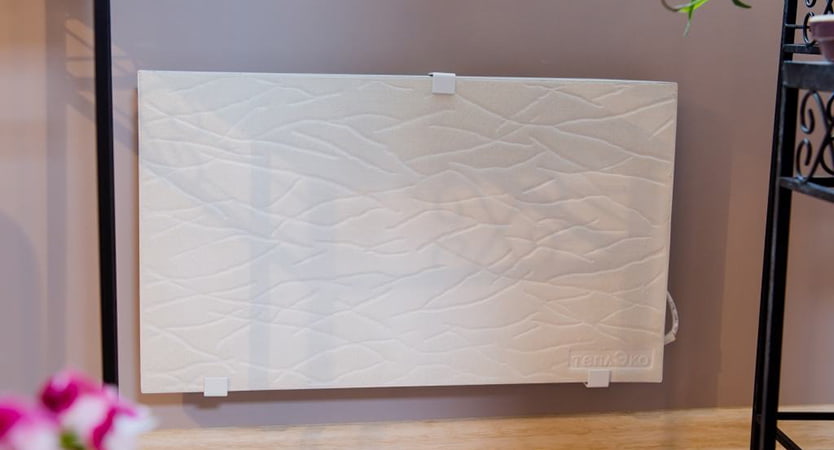
With all the simplicity and simplicity of the design, monolithic quartz heaters have a lot of advantages:
- Absolute fire safety. Since the heating element is reliably hidden in quartz, its interaction with the environment is reduced to zero. Therefore, fire is unlikely.
- Environmental friendliness. The mortar for the construction is made of ordinary sand. It is completely safe for people, animals and plants present in the house.
- Silent operation.
- Attractive appearance. Many manufacturers style heaters like decorative stone or Venetian plaster. The small thickness allows the device to be installed on any wall.
- Lack of unpleasant odors. In this case, the option is excluded when dust particles fall on the hot spiral. Therefore, you will not feel any unpleasant smell during work.
- Reliability and durability. Since the device has a minimum of structural elements, this point is not in doubt.
- Protection from moisture. Such a device can be installed not only in the bedroom or living room. Due to the fact that all elements are securely hidden inside the quartz block, the heater can be hung in the bathroom or dressing room.
- Does not burn oxygen. Due to the fact that the spiral is not in direct contact with air, the oxygen level in the room will not change. The user will not have a feeling of "dry" air.
- Excellent heat capacity. One of the properties of quartz sand is its rapid heating. Thus, having warmed up in 15–20 minutes, the monolithic slab will give off the received heat for 1–1.5 hours in the form of infrared radiation.
- Simple installation. You don't need any special knowledge. Just attach the supplied brackets to the wall.
- Affordable price. Most models rarely cost more than 56 $.
Disadvantages of the "monolith"
Unfortunately, nothing is perfect in nature. This statement also applies to monolithic quartz heaters.
One of the most significant drawbacks in this case is that the surface of the "monolith" heats up to a temperature of 100-120 degrees. If you inadvertently touch it, you risk getting burned. This is especially worth considering for those who have small children in their families. When installing such a heater, take care to equip it with some kind of protective screen.
Another negative point is the impressive weight of the product. It is especially important to consider this point during installation. If you want to install a 13-13 kg panel on an interior plasterboard partition, you are unlikely to succeed.
As already mentioned, many models cannot boast of a temperature control system, so you will have to do it manually by simply pulling it out of the socket.
If you come across a model that over time began to crumble and crack, most likely it is not the heater as such. You were just "lucky" to run into an unscrupulous manufacturer who replaced the quartz sand with gypsum or did not follow the manufacturing technology.
Infrared Quartz Heaters
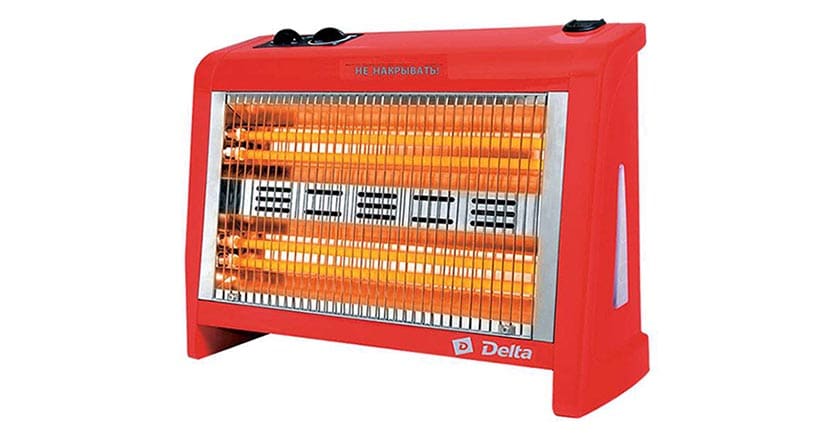
Now let's take a closer look at another type of energy-saving heating device for a summer cottage or apartment. IR heaters are fundamentally different in the principle of operation. While any other heating device heats the surrounding air, IR heaters warm objects: walls, sofas, cabinets, chairs, and, of course, people's bodies. This principle of operation is very similar to the "work" of the sun, the rays of which warm a person well even on a windy day.
Home "sun" device
Here everything is arranged a little more complicated than that of monolithic quartz heaters.
The heating element is also a carbon or nickel-chromium alloy wire coil. It is placed inside a hollow quartz tube, from which air is subsequently evacuated. There can be one or several such elements. The power of the device depends on this. Depending on the type and design of the device, the vacuum tubes can be replaced with the usual heating elements made of anodized aluminum or special plate heaters.
A mirror reflector is placed behind the tubes. It can be made of glass or polished metal plate, which is preferable.
This whole structure is placed in a special case, the front part of which is covered with a protective grill. The fact is that the "working" temperatures are very high here, and you can get burned.
There are many varieties of infrared heaters. You can purchase a model that is ceiling-mounted and takes up minimal space. There are also wall-mounted and portable models on sale. The latter are very interesting in that you are free to put them exactly where it is needed at the moment. Such a heater can be taken out on an open terrace and it will perfectly warm the whole family while having evening tea in the fresh air.
On sale you can also find portable devices that can work not from electricity, but from a small gas cylinder. It is convenient to take such a heater with you on a hike, fishing or to the forest for an autumn picnic.
Advantages of infrared devices
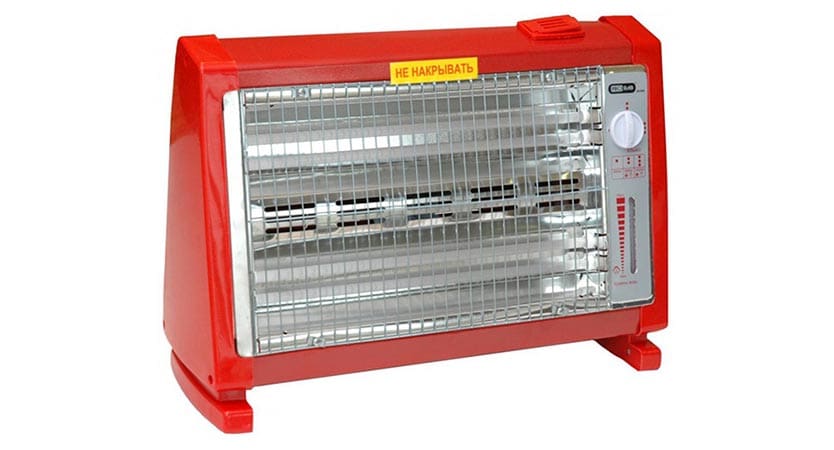
- Almost instant heating. Since the device heats objects, and not air, you will receive the result of its work immediately after switching on.
- Compactness. The heater does not take up much space and can easily fit into the trunk of a car. Especially compact touring models fit even into a small bag.
- Limited place of work. If the living room in your country house is quite large, you do not need to warm it up all over. Create a comfortable area for yourself around the sofa or table, and the whole room will warm up later on its own.
- Not afraid of drafts. Such a heating device works great on terraces, summer areas or gazebos. Since it does not heat the air, then nothing can “blow off” the heat.
- Quiet work.
- Excellent efficiency. The efficiency of the IR device can reach 97%. However, this applies to almost all modern heating devices.
- Convenient management. Many manufacturers equip their models with temperature controls and remote controls. This is especially true for ceiling models.
Cons of infrared heaters
- Not too high level of security. It is worth installing such devices only where small children cannot reach. After all, the surface temperature of the IR heater is so high that you can get a burn very quickly.
- Quartz tubes are quite fragile. So they need to be handled carefully. If one of them cracks, it will be impossible to repair, you will have to replace it entirely.
- The heated spirals glow quite brightly. This can be annoying for some people, especially at night.
![]() See also - Infrared heaters are harmful or not
See also - Infrared heaters are harmful or not
Which one to prefer?
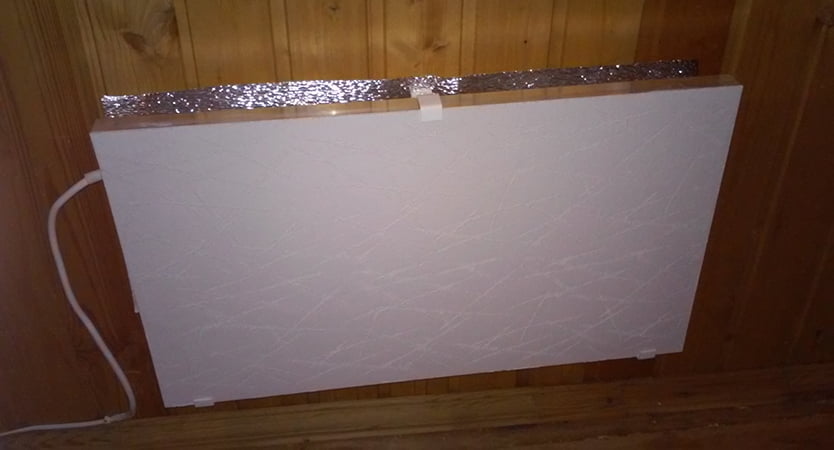
So how to choose a quartz heater? Should you prefer monolith or infrared?
It all depends on the purpose for which the device will be used. If you are planning to make permanent heating in a private house or in the country, monolithic panels are the best fit. They are not afraid of dampness, are durable and economical. If you spend a little more money and get a thermostat, you can leave the heater on for a long time. It will be enough to set the minimum comfortable temperature and you can go about your business. By the next visit, the dacha will greet you with warmth and comfort.
When it comes to establishing a comfortable temperature in an open area, terrace or just in a very large room, it is better to give preference to quartz IR heaters. Do not trust them with "main" heating. By the time an infrared heater fully warms up a large room, you are done with your business, and you will no longer need heat.
Monolithic panels are most beneficial to use as an additional heat source. For example, you can heat a boiler, and then maintain a given temperature using a quartz "monolith".
Regardless of which type of heater you prefer, it is very important to correctly calculate the power of the appliance. The appropriate specialists will help you with this. Do not believe the television advertising, which promises that a 0.5 kW device will quickly warm up a room in a frost of -10 C and below.
Also, pay attention to the country of origin. Among foreign companies, Swedes (UFO) and Germans (FAKIR) received the best recommendations. Domestic manufacturers producing mainly monolithic models: TeploPlit, TeplEko and some others. But the Chinese should not be trusted in the production of quartz heaters. According to user reviews, these models are very short-lived and often fail. But finding components for repair is a real problem.
See also:
- 20 best Ballu heaters 2025 year according to buyers
- 5 best heaters Stiebel Eltron 2025 of the year
- 5 best digital weather stations for home 2025 of the year
- 5 best electric fireplaces and hearths according to customer reviews
- 9 best electric fireplaces and hearths Electrolux according to customer reviews


